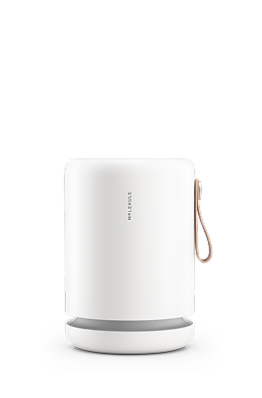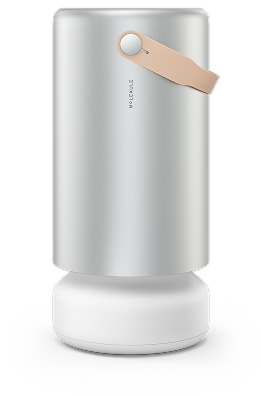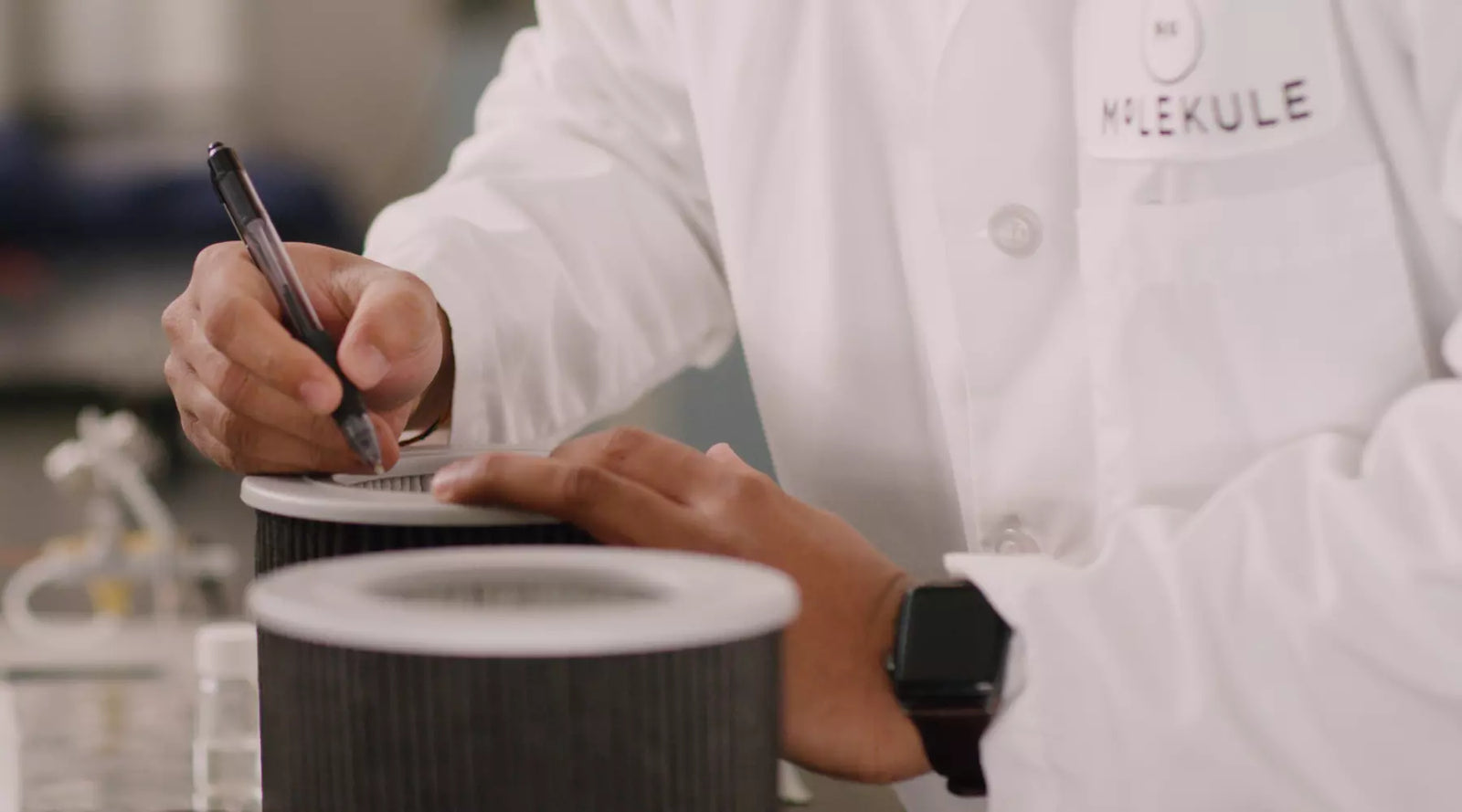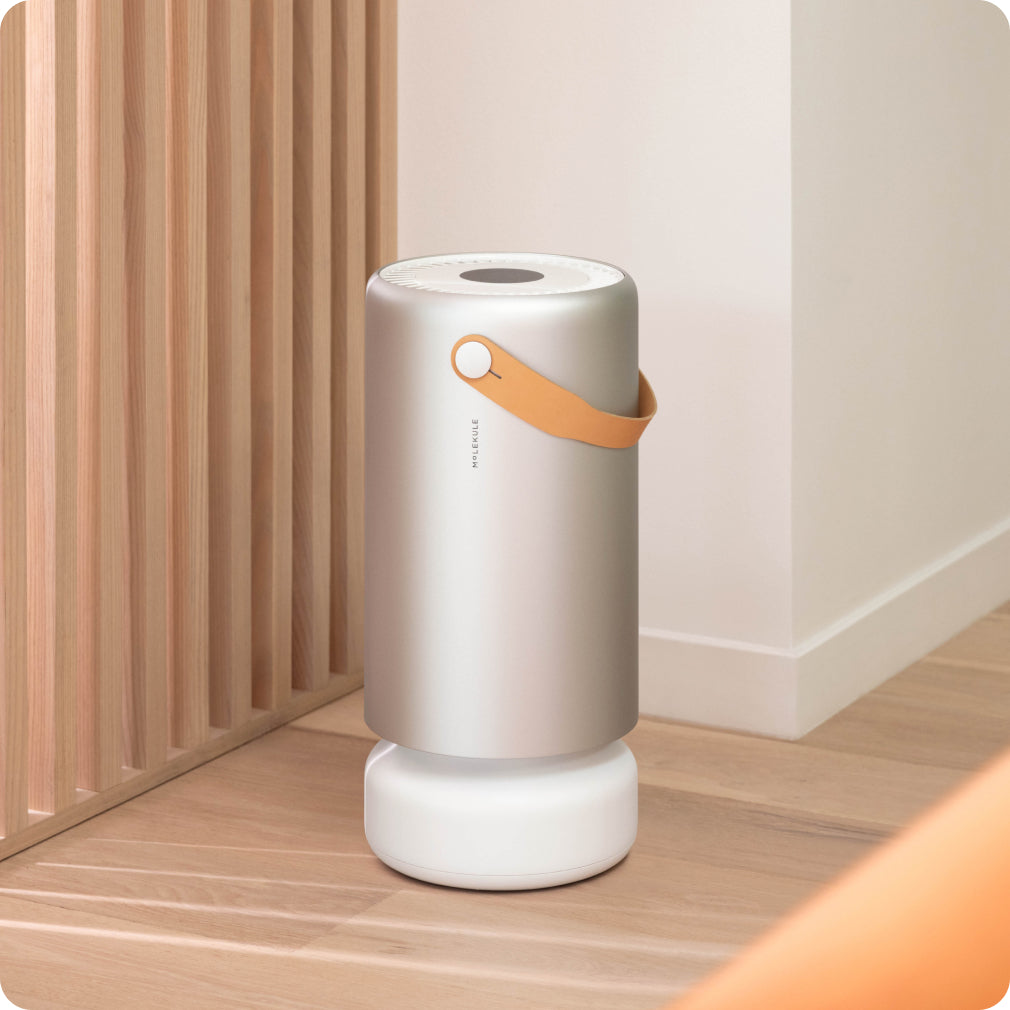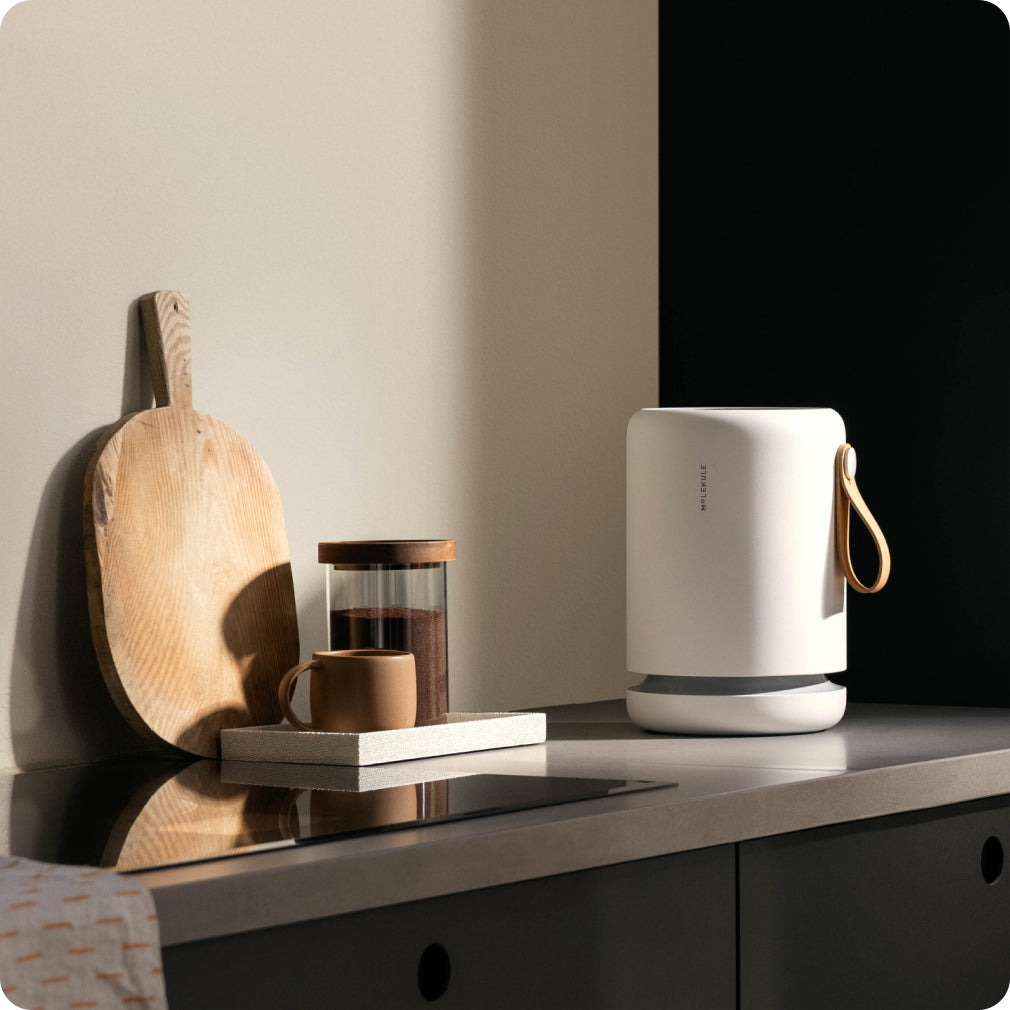More than 100 million Americans suffer from some sort of airborne allergy, according to the Allergy & Asthma Foundation of America. In fact, allergies are the sixth leading cause of chronic illness in the United States.
Air purification has been proven as a highly effective way to reduce the allergy triggers and pollution in indoor spaces. Since the 1940s, HEPA filtration has been the gold standard with filters that capture the pollutants and irritants in the air. But since that groundbreaking innovation, not much had changed in the world of air purification for nearly 60 years. That is, until Molekule developed PECO (Photo Electrochemical Oxidation), a technology that does more than just capture pollutants, going one step further to actually destroy them at a molecular level.
Recently, a team of indoor air quality experts at Florida International University decided to see how well Molekule’s PECO technology actually stacks up against HEPA-only filters. They tested how quickly and thoroughly PECO destroyed certain substances in the air. And the findings may have crowned a new champion in air purification technology.
First—what is an allergy?
Allergies are your immune system’s overreaction to something harmless in your body, like pollen or cat dander. The allergic response involves many thousands of interactions. Some of these are noticeable, such as itching, runny nose, or difficulty breathing. Others may only show up in blood tests or other labs.
Many things can cause an allergic reaction in humans, ranging from grasses, trees, weeds, pollen, and cigarette smoke; to dust mites and pet dander. That last one is huge, especially if you’re a cat person. It’s estimated that 10-20% of people globally are allergic to cats, second only to house dust mites as a source of indoor respiratory allergy.
And you know who’s especially allergic to cats? Mice. Don’t worry though. They weren’t in the same room as the cats during the following experiment.
But wait a minute. Why mice?
Mice and rats have long served as the preferred species for biomedical research animal models due to their anatomical, physiological, and genetic similarity to humans. Many of the things that trigger allergic reactions in mice are the same for humans.
Because the immune system is so complex, measuring a body’s reaction to allergy triggers isn’t always easy. So, the team looked at over a dozen different allergy markers to get a clear idea of how bad the allergic reactions were in each group of mice, including:
- Bronchoalveolar lavage fluid (BALF) cells. This is a fluid collected from the lungs. It can contain different immune cells that signal an allergic reaction.
- Eosinophils. When your immune system senses allergens in your body, it sends special cells called eosinophils to the area to help destroy the intruders.
- IgE or Immunoglobulin E. This is an antibody that recognizes allergy triggers and tells your body to release chemicals that cause an allergic reaction.
- Inflammation markers. This group of chemicals controls the swelling and redness that happen during an allergic reaction. For this study, the team looked for the inflammation marker IL-13, which is also involved in asthma attacks.
HEPA vs. PECO: The Study
For this study, researchers compared how HEPA and PECO filters handled an allergen that many of us know all too well: cat dander. (More specifically, they used a cat dander extract rich in a protein called Fel d 1, which is responsible for 90% or more of cat allergies. It’s found in the dander, glands, and saliva of house cats and can trigger an allergic reaction with relatively low amounts.) Don’t worry; no felines were harmed during this test.
They separated a group of mice into four different rooms for the experiments:
- No filter: The mice in this room were exposed to unfiltered cat dander to represent what a full-blown allergic reaction looks like.
- HEPA: The mice in this room were exposed to cat dander filtered by HEPA, which can capture 99.97% of the hardest-to-capture particles.
- PECO: The mice in this room were exposed to cat dander filtered by PECO, which has a lower capture rate but is designed to break down allergy triggers into neutral components of the air.
- Normal: These mice weren’t exposed to anything. This group represents what it looks like to not have an allergy.
Throughout the study, the research team tracked:
Concentrations of cat dander in the air: Three times a week, the team sprayed cat dander extract into three of the rooms. They measured how much cat dander was in the air just after spraying. Then, they ran the air through the different filters for an hour and measured again.
Allergic reactions in the mice: At the end of the study, the researchers measured different allergy markers in each group of mice to see which group had been exposed to the most cat dander.
Dander on the filters: The team also ran separate tests on HEPA and PECO filters to measure how quickly and completely they destroyed different allergens.
HEPA vs. PECO: The Results
After running the test for six weeks, the researchers noticed some key similarities and differences between the HEPA and PECO filters. Both filters removed allergy triggers from the air, but PECO filters went even further by destroying allergen proteins that landed on the filter. Overall, PECO provided greater relief from allergic responses than traditional HEPA filtration.
Fact #1: Both PECO & HEPA filtered cat dander extract below detectable levels.
The team sprayed cat dander extract into three different rooms: one purified by HEPA, one by PECO, and one without an air filter. After running each air purifier for one hour, cat dander concentrations in the HEPA and PECO rooms were below detectable levels. In the room with no air filter, about 50% of the cat dander was still in the air one hour later.

Fact 2: Allergy markers in the HEPA group were higher than in the PECO group.
Since the HEPA and PECO filters both removed allergy triggers from the air, the mice in those rooms showed better lung function and fewer allergy markers than the mice in the room without an air filter. There was one key difference, though. The mice in the HEPA group had significantly more allergy markers in their lung tissue than the mice in the PECO group—a clear sign that the combined power of filtration and destruction was better at reducing allergic responses in the mice than filtration alone.

Fact 3: PECO destroys what HEPA leaves behind.
In a separate test, the team measured how well PECO filters break down allergy triggers by putting cat dander proteins on HEPA and PECO filters. After one hour, 92% of the protein segments were still on the HEPA filter. Only 39% remained on the PECO filter. It’s natural for some protein segments to break down over time, but PECO technology plays an active role in the process by destroying and neutralizing allergens that land on the filter.

So what does that mean?
When it comes to allergy triggers, it doesn’t take much to make your immune system jump into gear. Even when the most advanced scientific techniques couldn’t detect cat dander in the air, the mice still experienced allergic reactions. On top of that, the mice in the HEPA group had a stronger allergic reaction than those in the PECO group, even though the air in both rooms seemed to have the same level of cat dander (none).
Basically, HEPA filters are effective at capturing air pollution, but only PECO has the power to destroy the molecules that traditional filtration leaves behind. And as the research team found out, that power can make a pretty significant difference. That’s why Molekule Air Pro and Air Mini+ combine PECO technology and true HEPA filtration to capture and destroy indoor air pollution.
So, if you’re an allergy sufferer or know someone who is, you should consider purchasing a purifier that destroys more pollutants than conventional purifiers.
